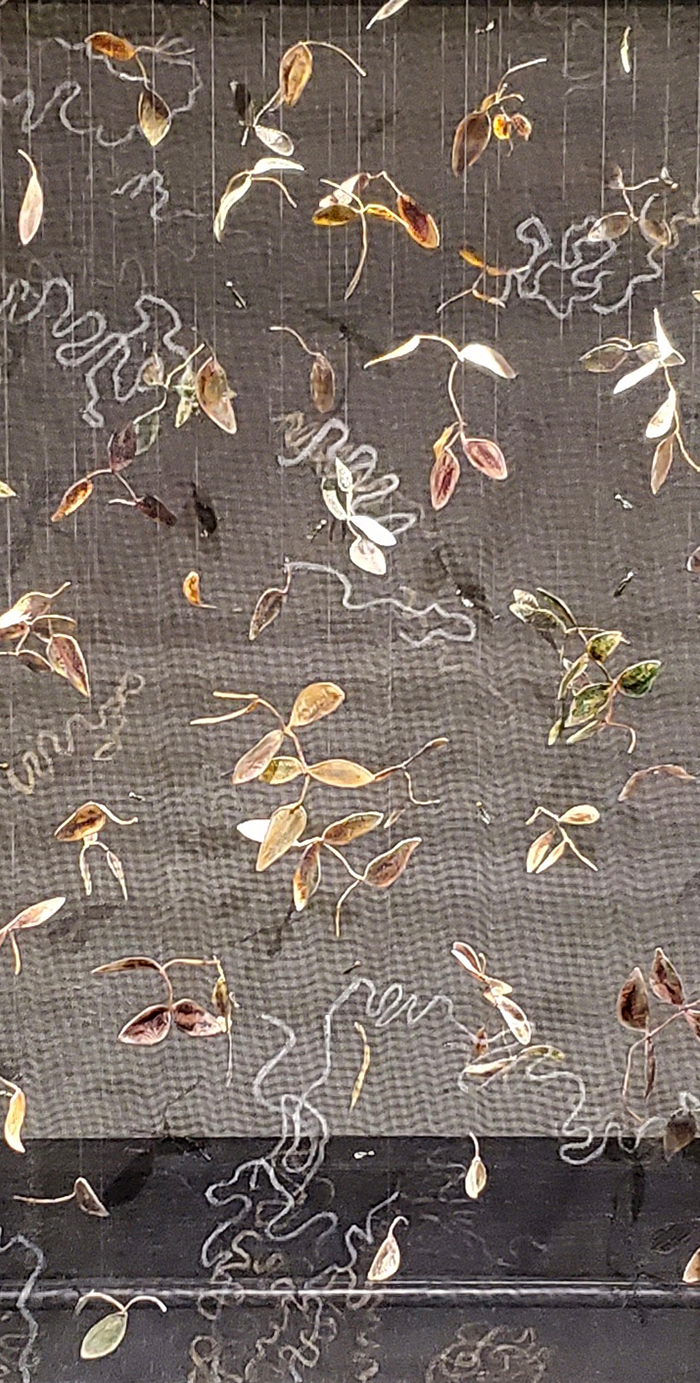March of the
Emerald Ash Borer
I grew up in a city on a block lined with trees whose branches formed a vast canopy of leaves above the street. When I was around 8 years old dutch elm tree disease arrived in our neighborhood. It had started on the East Coast and was migrating across the country. In a single summer week over 24 mature trees on our street were cut down, two specifically in our front yard. Visually, the view from my house changed from a sea of cool green leaves to one of dramatic absence, my neighborhood having been literally and figuratively stripped bare.
Video of deinstallation at the Brunnier Art Museum / Iowa State University, Ames Iowa 2021
The specter of this scenario returned in 2019 when the Emerald Ash Borer (an invasive insect species) was spreading into Iowa from the East, again changing the landscape as mature, beautiful trees were being cut down across the state.
There are many different types of ash trees growing in Iowa. The white ash is native to the state. One identifying feature of ash trees is that their leaves grow opposite of each other on their stem which differentiates them from trees where the leaves grow in an alternating pattern. The emerald ash borer (known as EAB), native to north-eastern Asia, was first discovered in North America in 2002. Since arriving, the borers have killed millions of ash trees. The EAB is an iridescent green, winged insect that lays eggs in the bark of the trees. When the eggs hatch, the larvae burrow under the bark and create squiggly patterns in the soft wood underneath as they eat and grow. Feeding on its living tissue is what kills the tree. When an adult insect emerges from under the bark it creates an identifying ‘D’, which can be seen if one looks closely.
“Why is it invading? What keeps it in check?”
How the emerald ash borer arrived in North America is cause for much speculation.
It is known that cold temperatures over extended time will kill the emerald ash borer, but as the planet warms, the EAB is moving further west and north, expanding its reach. And as it does, millions more trees will be cut down. What is the healthy option? How does one balance the survival of the ash trees with the survival (or profusion) of the EAB? What does survival look like in this scenario?

